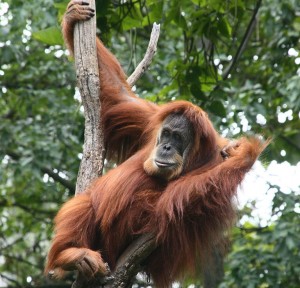Tigers Declared Extinct in Cambodia
Vulnerable to the illegal wildlife trade, Tigers have now been declared extinct in Cambodia by WWF. A bold action plan has been launched to reintroduce the big cats back into Cambodia.
 Image: U.S. Fish and Wildlife Service - Public Domain
Image: U.S. Fish and Wildlife Service - Public Domain The dry forests of Cambodia used to be home to scores of Indochinese tigers, but now WWF Cambodia has announced that the tigers in the country are “functionally extinct” – there are no longer any breeding tigers left in the wild. The last tiger was seen on a camera trap in the eastern Mondulkiri province in 2007. Demand for their body parts, which are so highly prized in traditional “medicine”, have made them vulnerable to the illegal wildlife trade, and intensive poaching of both tigers and their prey have devastated their numbers.
However, at the same time as the announcement was made by WWF, the conservation organisation also launched a bold action plan to reintroduce the big cats to Cambodia, back into the Mondulkiri protected forest where the last tiger was seen. For starters, they want to import two males and five or six females, with the first release scheduled to begin in 2019. They hope that the number of tigers will grow to 25 within 10 years after the release. Talks have already begun with countries including India, Thailand and Malaysia to provide tigers for the release. According to WWF, this would be the “first transnational tiger reintroduction and will be based on best practices developed from successful reintroductions within India.”
The action plan also includes details of protection that must be in place before the reintroductions could begin. This will involve setting aside a chunk of suitable habitat which will be protected against poachers by strong law enforcement, and action to protect the tigers’ prey. The entire project is estimated to cost $20-50 million.
Poaching combined with deforestation has caused tiger populations across Asia to plummet. The global population of wild tigers is estimated to be no more than 3,200. The animals currently inhabit less than 6 percent of their historic range with a 42 percent decline since 2006. The Cambodia Tiger Action Plan follows the objective of 13 tiger range countries (Bangladesh, Bhutan, China, Cambodia, India, Indonesia, Laos, Malaysia, Myanmar, Nepal, Russia, Thailand and Vietnam) launched in 2010 to double the number of wild tigers in the world to more than 6,000 by 2022, which is the next Year of the Tiger. The global aim is known as “Tx2.”
Great success stories have come from some countries – tiger numbers are increasing in Nepal, India, Bhutan and Russia, the latter thanks to protection measures against poaching and President Vladimir Putin’s love of big cats. However, Southeast Asia is still facing a crisis. The revival of tiger numbers in Cambodia could not only mean healthier and more balanced ecosystems in the country, but could also boost ecotourism, and bring welcome revenue to the national economy.





No comments yet.